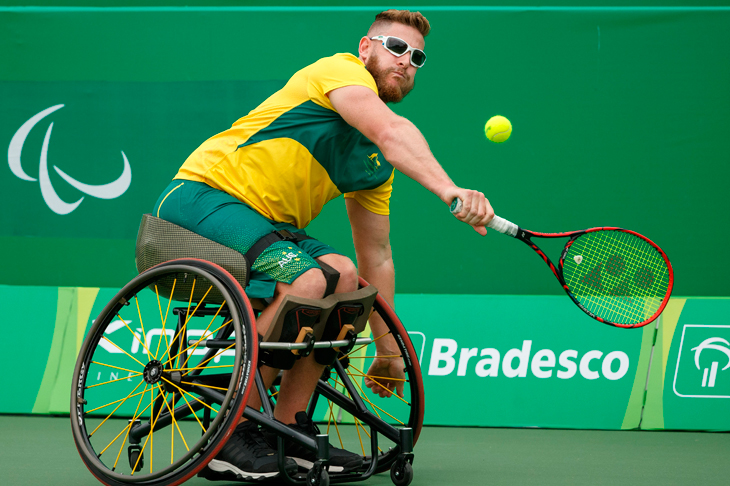‘A woman preaching is like a dog walking on his hind legs,’ said Samuel Johnson, ‘It is not done well; but you are surprised to find it done at all.’
This timeless apercu came to mind twice recently. The first time while I was reading Rod Liddle’s trashing of elite women’s soccer in this magazine, citing, in support of his thesis, the 7-0 thrashing of our Rio Olympic medal prospect Matildas by an under-15 Newcastle boys team. The second time was while watching Channel 7’s coverage of the 2018 Australian Tennis Open. Not, I hasten to add, while I was watching a women’s match. As the legendary Billie-Jean King famously demonstrated, the world’s #1 female seed is more than a match for a man (albeit a septuagenarian ex-champ of the amateur era), and even in the days when I played to a reasonable standard myself, I always struggled to hold serve against the better women in my club.
But though my skills, stamina and physique have declined dramatically in the intervening years, having watched only a few minutes of two of the world’s best wheelchair players in action, I’m pretty sure I could beat either of them in straight sets. Don’t get me wrong. As Franklin D. Roosevelt, Toulouse Lautrec and the recently departed Stephen Hawking have demonstrated, there are many fields of endeavour that can be pursued to the very highest level without the use of your legs. But tennis isn’t one of them. Most of the elements which make the elite game such a compelling spectacle – the impossible pick-ups, the towering smashes, the marathon rallies – simply cannot be attempted in a wheelchair. All the points I watched when I inadvertently tuned in, were the kind of hung-over married-couple lob exchanges you can see in any public park on a Sunday morning. In fact, the challenge of playing even the simplest groundstrokes for wheelchair players is so great that one of the sport’s fundamental laws – that the ball may only bounce once before it is returned – has had to be relaxed. And while two-bounce tennis may be fun to play, from the spectator’s point of view it is not much more compelling than ‘no net’ tennis. My intention is not to belittle the efforts and achievements of those involved. I have nothing but admiration for someone who takes up a sport after a life-changing injury or illness, still more so when they attain any kind of success in that field. And I can see why their family and friends would want to watch them competing and achieving that success. But is it really something that warrants primetime coverage by a national network? To put it another way, isn’t there something slightly questionable about able-bodied people choosing to watch disabled people battling their disability? I certainly felt a bit uncomfortable doing so myself. It reminded me of how I felt as a teenager when my much more serious older brother asked me, after I’d told him how much I’d enjoyed David Lynch’s The Elephant Man, how my paying to see a film about the exploitation of a man’s physical deformity is morally any different to a Victorian theatre audience paying to gawp at the real John Merrick.
But perhaps I am underestimating the generosity of spirit of Australian TV audiences. Maybe the ratings for the wheelchair competition were comparable to those of the main tournament, and maybe the decision for the Open’s major advertisers to extend their sponsorship to the wheelchair competition was a commercially savvy one. Dylan Alcott, the likeable young Australian who won the match I looked in on, and went on to win the men’s title for the fourth successive year, is certainly in no doubt about his bankability, going as far as to suggest afterwards that the $20,000 prize-money he received might be rather less than he deserves. And that’s an opinion he can hardly be blamed for holding after the tournament’s bank sponsors persuaded him (and presumably paid him another handsome fee) to appear in the TV ads they ran during the coverage. But I suspect the truth is that ANZ’s decision to feature Mr Alcott in their ads, and Channel 7’s coverage of the competition, had a lot more to with political correctness and corporate virtue-signalling than ROI.
Got something to add? Join the discussion and comment below.
Get 10 issues for just $10
Subscribe to The Spectator Australia today for the next 10 magazine issues, plus full online access, for just $10.
You might disagree with half of it, but you’ll enjoy reading all of it. Try your first month for free, then just $2 a week for the remainder of your first year.















Comments
Don't miss out
Join the conversation with other Spectator Australia readers. Subscribe to leave a comment.
SUBSCRIBEAlready a subscriber? Log in